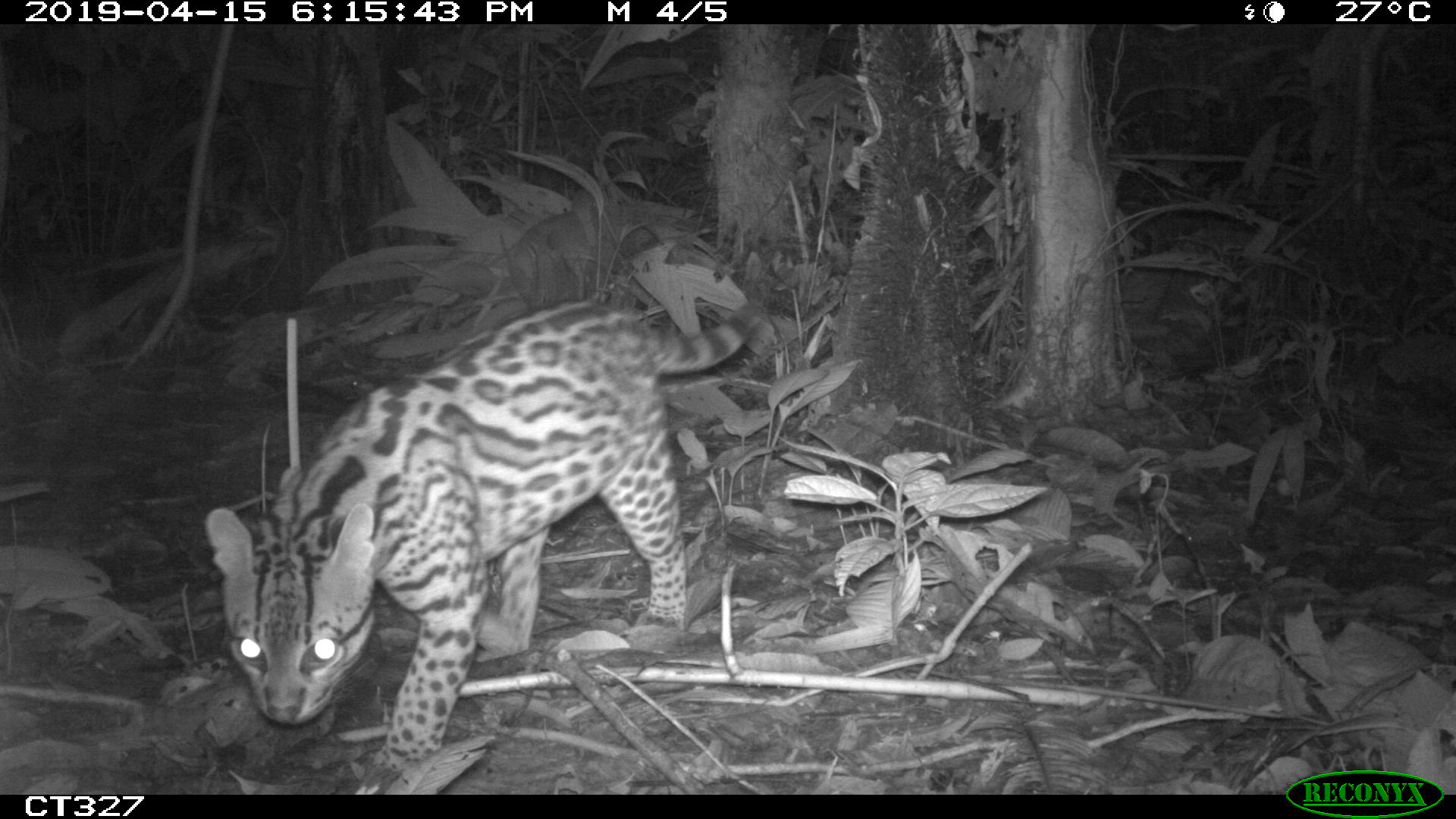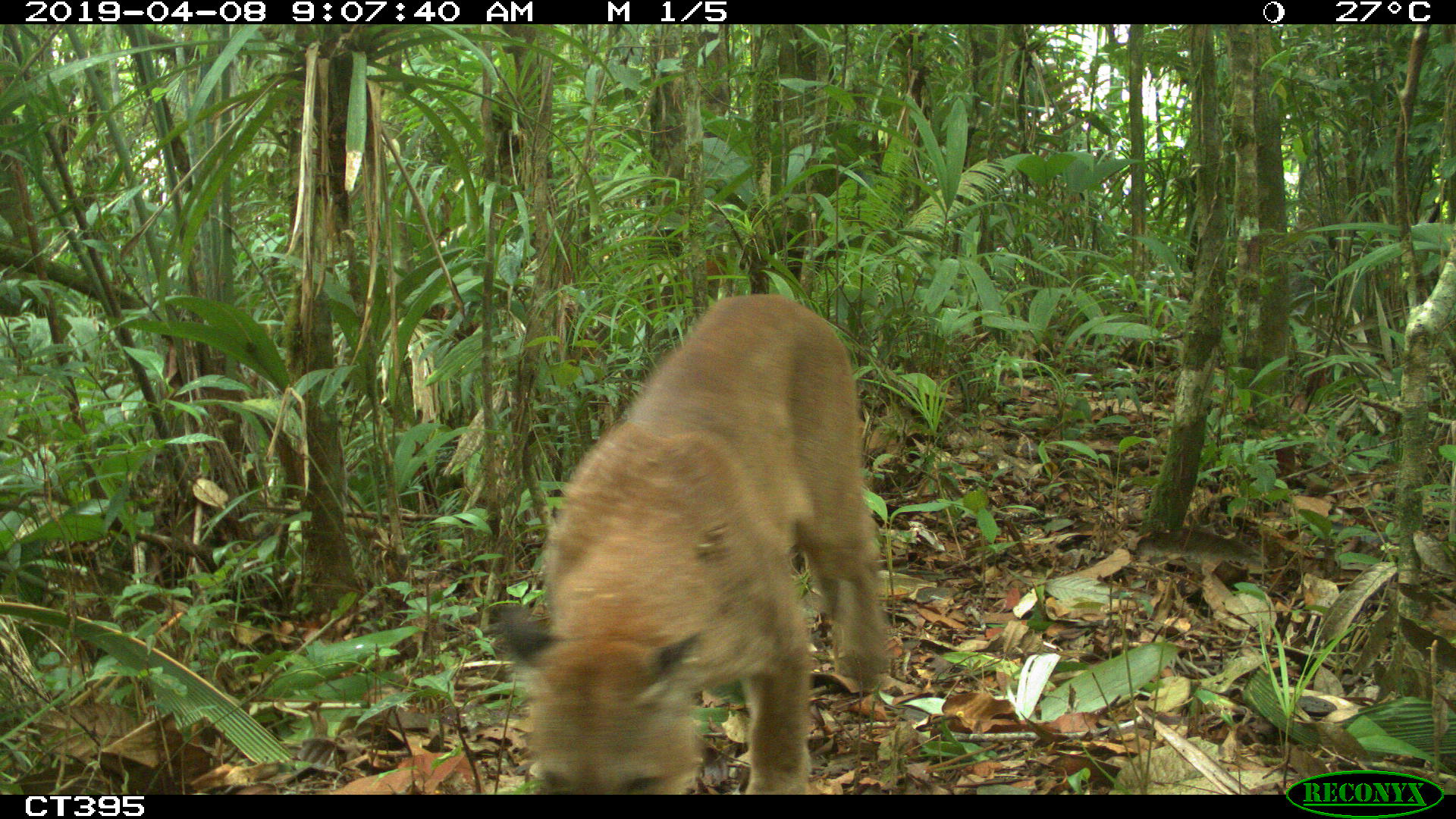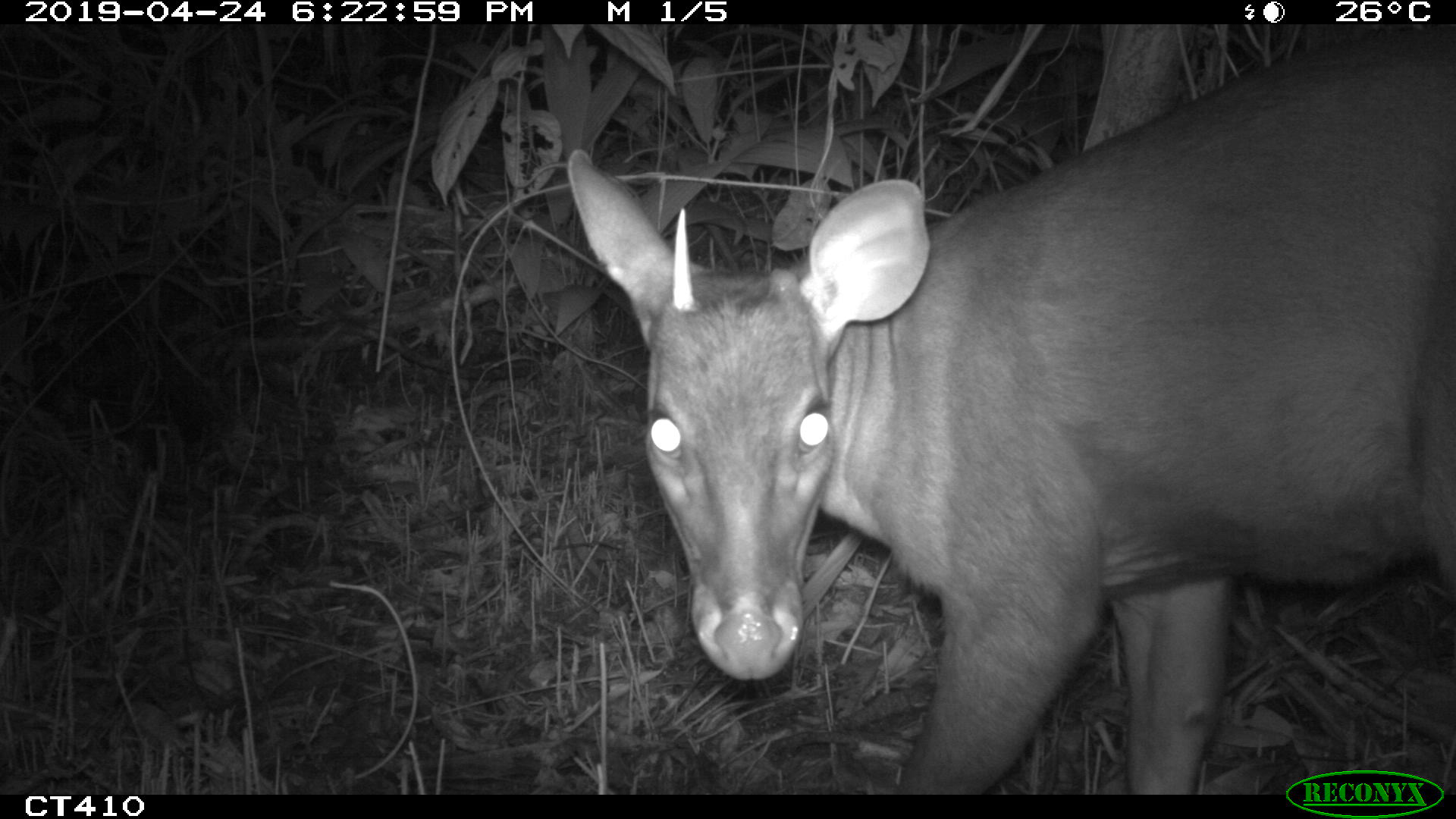Pumas, jaguars and ocelots, among the mammals ‘captured’ with camera traps

Facing the loss of their habitats, many species suffer conflict with humans in Bajo Baudó and within the Integrated Management Regional District El Encanto de los Manglares.
“The study of large and medium-sized mammals, those that roam the jungle with the authority of being the main predators was, until some ten years ago, a complex activity, based on the detection and following of tracks and excrements or the spotting of a hair tangled on a branch. It was, basically, following a ghost that could be perceived in the distance, passing through, at the most as a shadow,” says Juan David Corrales Escobar, biologist of the Universidad de Caldas.
But things have changed with the invention of camera traps, a tool that allows researchers to intrude in the privacy of the forests and see the movements of animals first-hand.
And that, exactly, was what Juan David did during the ‘Participatory characterization of conservation targets of the Integrated Management Regional District El Encanto de los Manglares del Bajo Baudó´ in Chocó, where WCS has been working, with the Concosta Community Council and Codechocó, to identify outstanding animal species that were justifiably considered conservation targets and require different strategies contributing to their preservation.
As part of this exercise, and during no less than 45 days, Juan David installed 49 camera traps in three different places, all located within the Concosta Community Council: the higher Capiro River basin in the zone known as El Firme, the border between the Carrizal and Agua Lejía marshes and the left margin (downriver) of the Gualajero estuary.
Some of these places are located in the township of Guineal and in mainland forests and mangual zones. The latter, areas that are sometimes flooded and occasionally dry and firm, depending on the influence of the tide.
The cameras placed by Juan David, with the support of local assistants, worked intermittently (they are automatically activated with the animals´ movements) and were meticulously installed by the researcher himself. He placed them 50 centimeters above the ground, on logs, at 200 meter intervals and along 10 routes that the mammals use as paths to move about, look for food or as a latrine.

In the 8.997 pictures taken, of which 89% were satisfactory, the cameras photographed 19 medium-sized and large mammal species, mainly agoutis (Dasyprocta punctata), pacas (Cuniculus paca) and collared peccaries (Pecari tajacu). But they also registered naked-tail armadillos (Cabassous centralis), tayras (Eira barbara), jaguars (Panthera onca), jaguarundis (Puma yagouaroundi), pumas (Puma concolor), northern tamanduas (Tamandua mexicana), nine-banded armadillos (Dasypus novemcinctus), crab-eating raccoons (Procyon cancrivorus), deer (Mazama cf. zetta), otters (Lontra longicaudis) and ocelots (Leopardus pardalis).
As per the IUCN Red List of Threatened Species (2014), of the total number of species registered by Juan David’s cameras, 16 (84,2%) are under least concern of extinction at a global level. But in the Red Book of Colombian Mammals, five are classified with a higher degree of threat. Such is the case of the naked-tail armadillo, the ocelot and the puma, that appear as `near threatened´, while the otter and the jaguar are listed as `vulnerable´. Actually, in this zone of the Colombian Pacific Coast, hunting is one of the main threats for all of these animals, as Juan David concludes.
The people of Bajo Baudó hunt some animals, mainly felids, because of the risk they represent for livestock and children, if they approach populated areas. Children have to walk through jungle zones on their way to school or use bathrooms that are frequently located on the outside of their houses.

Inhabitants of this region of Chocó also hunt pacas and deer, as their meat represents an alternative to fish consumption and, occasionally, an additional income, when marketing their meat.
For this reason, this study also emphasizes the need of different activities (such as socialization and environmental education workshops or participatory monitoring projects) that contribute to increase local Bajo Baudó inhabitants´ awareness of the importance of protecting the fauna of their region.